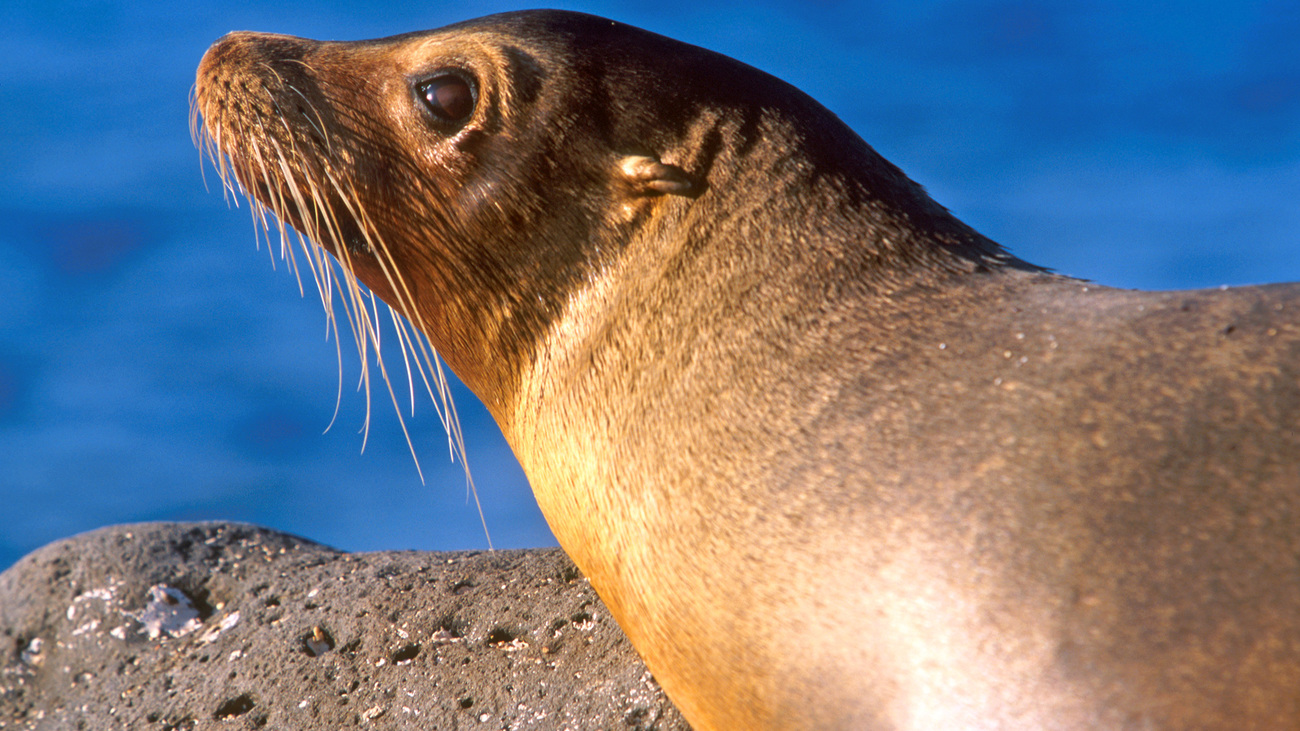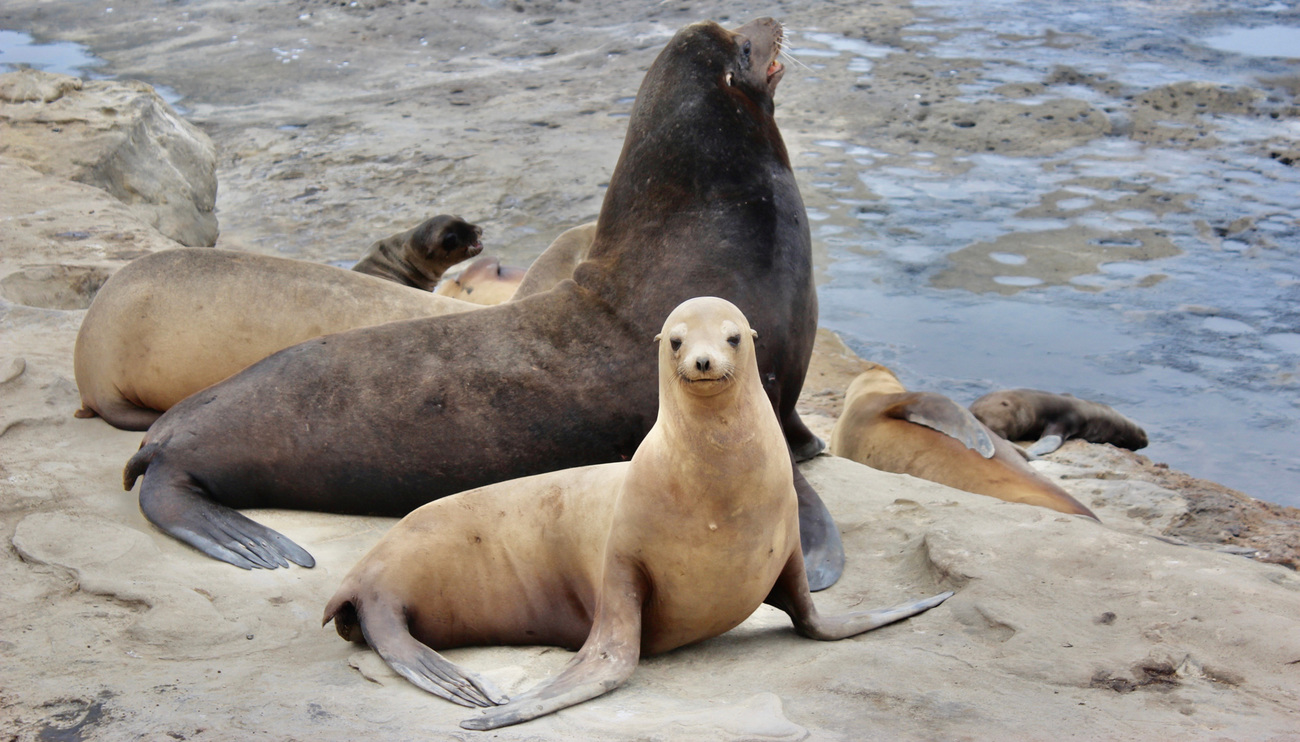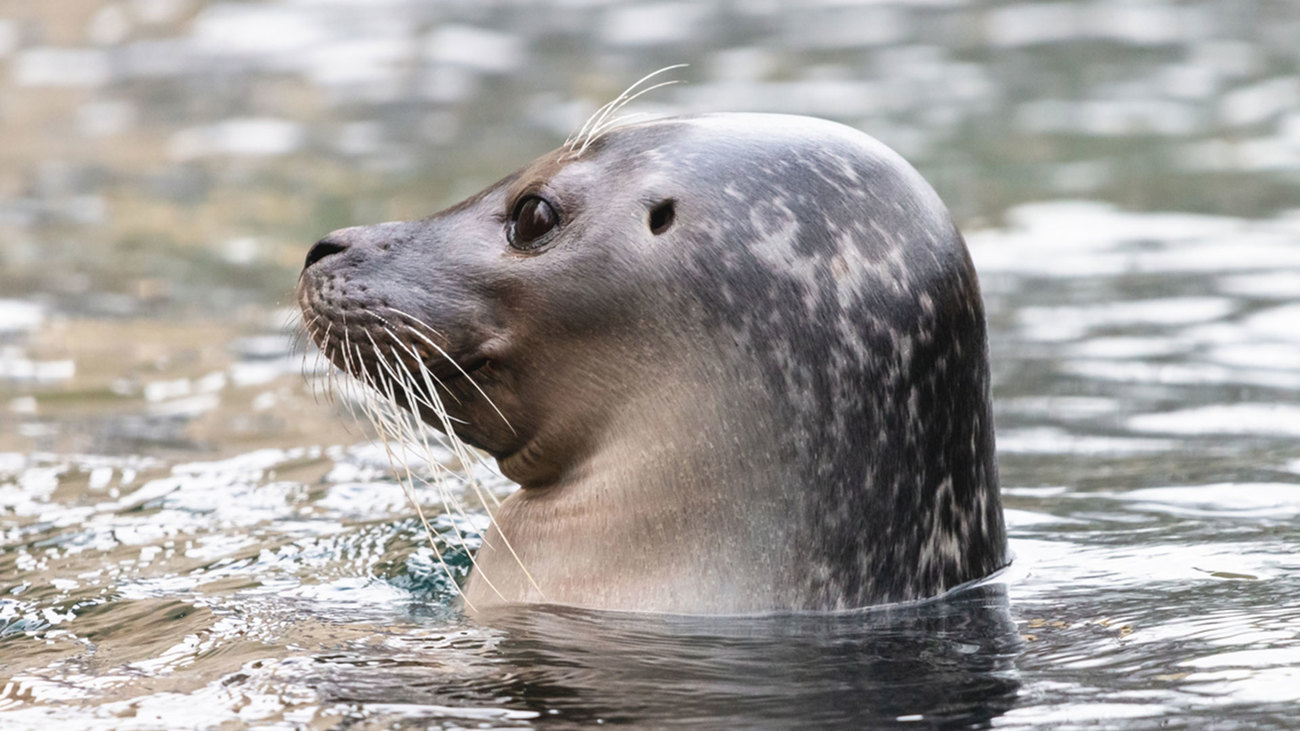Seals vs. sea lions: what’s the difference?
Seals vs. sea lions: what’s the difference?

Seals and sea lions are one and the same, right? Not quite. While both are carnivorous, semi-aquatic marine mammals belonging to the suborder Pinnipedia (Latin for ‘fin-footed’), which also includes walruses, they are different in many ways. Let’s look at some key differences between the two.
How they look
Seals belong to the family Phocidae, within which there are 18 living species, including harbour seals, leopard seals, and elephant seals. They’re also known as ‘true seals’ or ‘earless seals’. However, despite this name and their lack of external ear flaps, seals do in fact have ears—they just have small ear holes on the sides of their heads with no flaps. Members of the Phocidae family range vastly in size, from huge elephant seals that weigh up to 2,000 kilograms (4,500 pounds) to tiny baikal seals that weigh 50 to 100 kilograms (110 to 220 pounds).
Sea lions belong to the family Otariidae, which includes six living species of sea lions and eight living species of fur seals. Also referred to as ‘eared seals’, sea lions do have visible external ear flaps. The largest sea lion species—the Steller sea lion—can weigh as much as 1,133 kilograms (2,500 pounds), while the smallest—the Galapagos sea lion—only weighs about 80 kilograms (175 pounds).
But the ears and size are not the only differences in appearance between seals and sea lions. You can also note key differences between the two by looking at their flippers. Seals have shorter front and hind flippers, all of which are fur-covered and have long claws on each toe.
In contrast, sea lions have longer, skin-covered flippers with claws on only the hind flippers, which they use to scratch and groom themselves. The flippers of sea lions are also much larger than those found on seals and can be used for locomotion as well as grooming.

How they move
Speaking of locomotion, both seals and sea lions are agile, graceful swimmers thanks to their flippers. However, although their movements in the water are similar, how they achieve these movements is almost polar opposite from one another.
To propel themselves through water, seals use their powerful hind flippers, fanning them out and moving them in a side-to-side motion. Sea lions do the opposite. They use their large front flippers to swim and their back flippers to steer. This method results in sea lions being among the fastest swimming pinnipeds, reaching speeds of up to 40 kilometres per hour (25 miles per hour).
On land, there are also noticeable differences in movement between the two. Sea lions have much slimmer bodies and can rotate their hind flippers under their bodies to walk, or even gallop quickly on all fours. This walking and galloping is aided by the increased size of their flippers, which allows for more effective propulsion outside of the water.
Seals are rounder in appearance and move much more awkwardly on land. They are unable to rotate or walk on their much smaller flippers—a seal’s movement on land is more like a caterpillar’s. This combination of a rounder body and smaller flippers leads seals to inch their bodies along the ground in a movement known as ‘galumphing’.
How they sound
Both seals and sea lions produce vocalisations to communicate, though sea lions are the chattier of the two. A repertoire of barks, growls, and groans helps sea lions recognise each other, establish and defend territories, and engage in other social interactions.
Sea lions also have exceptionally good hearing, both on land and underwater. They can hear frequencies up to 70,000 hertz but mostly vocalise in the 100-10,000 hertz range. Despite speculation that sea lions can use echolocation, there is no good evidence to suggest this.
Seals tend to be much quieter than sea lions. They use growls, whistles, and moans to communicate, but they don’t bark. Scientists have observed that grey seals clap their flippers together to ward off rivals and attract a mate. This behaviour is different from the one seen in zoos, where seals clap because they have been trained to do so, rather than for a purpose, as seen in the wild.
How they see
One point of similarity between seals and sea lions is their exceptional eyesight. Both are equally adept at seeing both above and below the water. All pinnipeds have a membrane called the tapetum lucidum at the back of their eyes. This increases the amount of light taken in by the eye to aid with night vision and causes the eyes of seals and sea lions to glow, much like the eyes of cats.
The tapetum lucidum is particularly useful for species that hunt at great depths, such as the elephant seal. These seals search for prey in deeper waters where the light does not penetrate, so they rely on their night vision and recognition of their target’s bioluminescence to hunt effectively.

Where they live
Seals can be found in polar, temperate, and tropical regions—especially in the North Atlantic, the North Pacific, and the Southern Ocean. Their preferred habitat can vary greatly among species; some prefer areas with sandy beaches, others live on rocky ledges or pack ice, and certain species can be found in freshwater.
Sea lions are found on coastlines, islands with sandy beaches, and rocky ledges from the subarctic to tropical waters in the Northern and Southern Hemispheres (except in the northern Atlantic, where there are no sea lions).
Conservation status
Species of both seals and sea lions are considered endangered by the IUCN Red List. The Caribbean monk seal and the Japanese sea lion have not been sighted in the past 50 years, leading researchers to believe that these species are extinct.
The other species of seal range from least concern to endangered on the IUCN Red List, with the Galapagos fur seal, Hawaiian monk seal, Caspian seal, and Mediterranean monk seal all classed as endangered.
The Australian sea lion, the Galapagos sea lion, and the New Zealand sea lion are all classed as endangered, the Steller sea lion as near threatened, and the South American and Californian sea lions as least concern.

How IFAW helps seals
IFAW was founded on the mission of ending the commercial seal hunt in Canada. We travelled to the ice to observe and document the annual slaughter, bringing international media, politicians, and veterinary experts with us to observe the cruelty firsthand. Since then, our work has helped bring about monumental changes, like the 2009 EU ban on seal products. We continue to urge the Government of Canada to adopt sustainable alternatives to the commercial seal hunt—ones that can support the economy and local communities while protecting seals.
On Cape Cod in the US, our Marine Mammal Rescue team is revolutionising the way we rescue entangled seals. One method, developed in partnership with the Marine Mammal Center in California, involves using a sedative dart, which enables our team to capture, disentangle, and treat seals. We work to minimise the suffering of seals, release them back to the ocean, and share our expertise with marine mammal rescue networks around the world.
IFAW also promotes coexistence with seals by working with communities on Cape Cod to ensure that beachgoers can appreciate the animals from a safe distance, minimising additional human impacts. We have distributed 100 informational seal signs to 14 towns and the Cape Cod National Seashore. Through greater awareness of seal behaviour and habitat, this initiative aims to inspire community conversations around coexistence with wildlife rather than conflict.
Related content
Our work can’t get done without you. Please give what you can to help animals thrive.